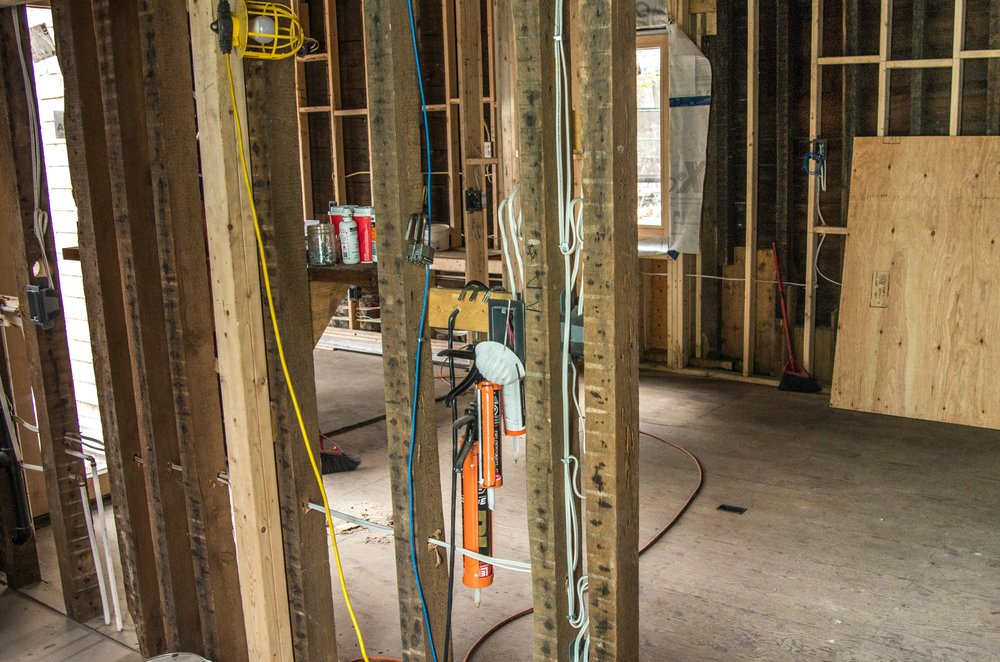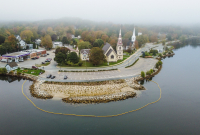Support strong Canadian climate journalism for 2025
Build it and they will come, the saying goes. But who is going to build it? And who’s going to build it green?
Those are the questions a new Nova Scotian collaboration plans to answer. The Building to Zero Exchange (BTZx) is dedicated to growing capacity that supports the construction of high-performance, green buildings.
“We have to build better buildings. That’s why we created BTZx, a networking model that brings folks who are working on greener buildings together, to learn from each other, and to collaborate,” says Lara Ryan, senior advisor of the Exchange, and one of the catalysts of its creation.
BTZx will help cut greenhouse gas (GHG) emissions in the province — Nova Scotia’s goals are to reduce GHGs by at least 53 per cent below 2005 levels by 2030 and to attain net-zero status by 2050 — by ensuring more of our buildings are energy net zero going forward. A net-zero building is one that generates as much energy as it uses, so it has an energy use balance of zero.
“Building high-performance buildings, net-zero homes, and net-zero commercial and institutional buildings … this is the vision,” says Ryan. “There’s lots of great work being done, but we’re not always connecting the dots and making sure we’re learning from each other and finding opportunities to collaborate.”
Reducing GHG emissions is key to mitigating the worst impacts of climate change.
“Climate action is urgently needed,” says Shannon Miedema, Director of Environment and Climate Change for the Halifax Regional Municipality. In 2020, the Halifax Regional Council unanimously adopted HalifACT, the city’s ambitious plan to achieve net zero by 2050.
It’s a commitment to reduce emissions, switch to clean energy sources, and show that leadership can come from local governments. HRM is a foundational partner of the Building to Net Zero Exchange, along with the Province of Nova Scotia, Dalhousie University, Efficiency Nova Scotia, Clean Foundation, the Construction Association, and the Nova Scotia Community College.
Net Zero Atlantic is serving as the secretariat for the broader network, which includes building designers and contractors, policymakers at various levels of government, building owners, and the many other stakeholders in the business of reducing our carbon footprint.
“We need an intentional effort to build more green buildings in Nova Scotia,” says Miedema. “I think there are a lot of contractors ready and able to build high-performance buildings. But we need to support this green building sector with the right policies, procedures, and knowledge. So many people are talking about this, but we just have to do it. And now.”
You need only look out your window to see there’s a building boom across Nova Scotia and a need for more housing. Statistics Canada shows that Nova Scotia’s population rose by over 30,000 this year, and Halifax will soon break the 500,000 people barrier. The provincial government has said it wants to see the province’s population hit two million by 2060.
“I’m concerned that all the housing being built right now is locking us into a carbon future,” adds Miedema. “But at the municipal level, Halifax can’t legislate that all new buildings be net-zero ready. We need the province to support a different future.”
Halifax Mayor Mike Savage agrees that the climate crisis must be a lens applied to new infrastructure and construction.
“Action was best 30 years ago, but now is the only time we have,” Mayor Savage said at the launch of the Building to Net Zero Exchange. “Halifax is not too small to take action — that’s why we created HalifACT.”

Fortunately, better building codes are on their way in Canada. By 2030 new buildings must be highly energy efficient and net-zero ready. But until then, construction doesn’t have to meet these higher standards.
“If we’re going to build 40,000 new homes in the next few years, we need to make sure they are high energy-efficiency buildings — they are going to be here for 75 years or more,” says Ryan. “The Building to Net Zero Exchange wants everyone to know that we already have the technology and that reducing energy is good economics over the lifetime of a building.”
Green homes really do make sense — and cents — for homeowners, Ryan believes.
“Builders may pass on extra costs to be net zero ready — although this premium is not as big as some might think — but we need to look at lifetime operating costs of a building, not just the initial sticker price,” she says. “Then, we have to do a better job communicating that this is the better deal for the buyer.”
The Building to Zero Exchange has been created to share success stories, work on collaborative projects, and help the industry identify who’s doing what and who to connect with.
“We’ll have a resource hub and info on who is offering training,” says Ryan.
“We’re not trying to duplicate what’s already happening,” she says. “And we’re not trying to eat anyone’s lunch. But we want to fill gaps in training and collectively figure out how best to move forward. We need leaders in this space to show what can be done — and to turn people’s heads.”
This story is being shared by the Climate Story Network, an initiative of Climate Focus, a non-profit organization dedicated to covering stories about community climate solutions.





Comments